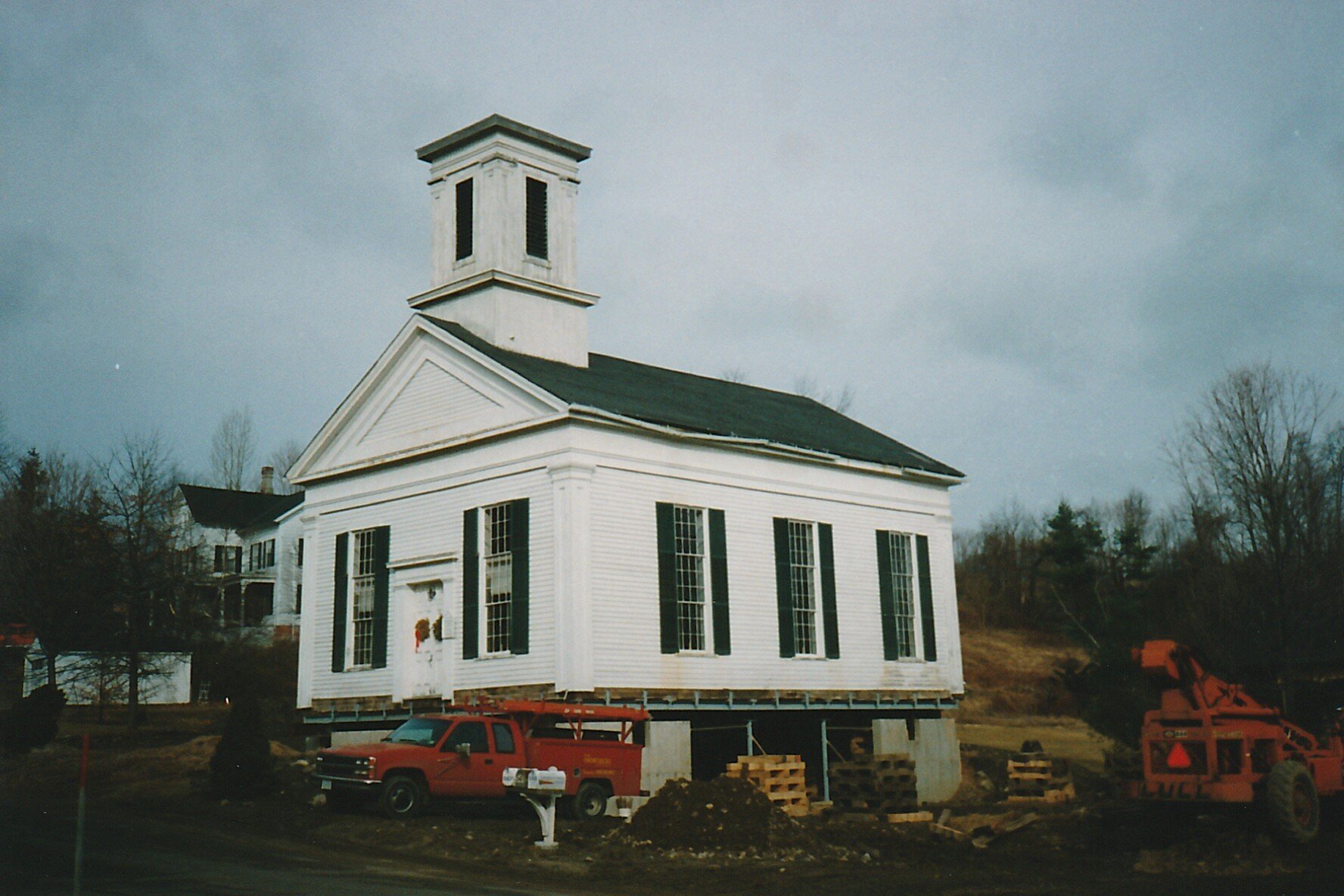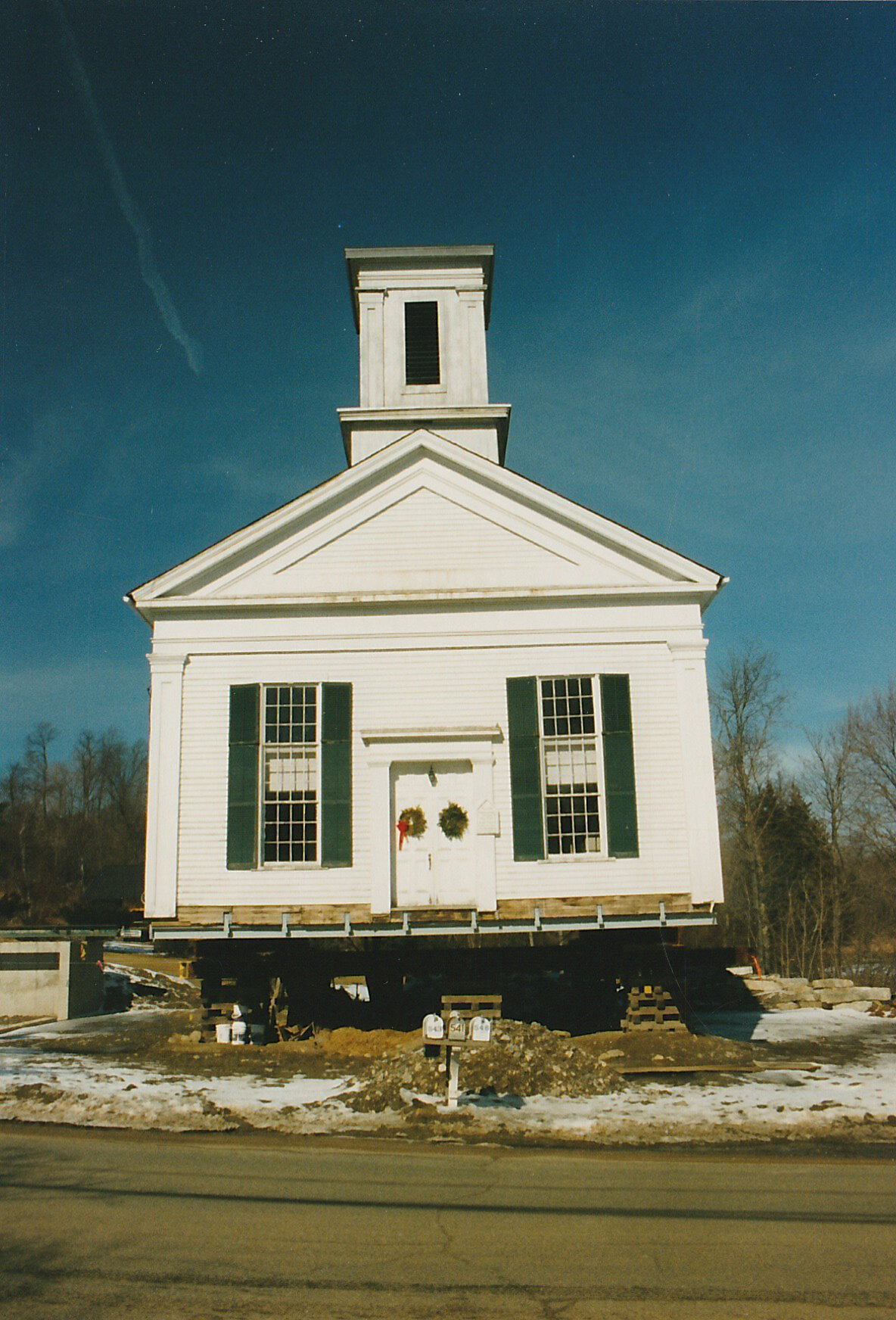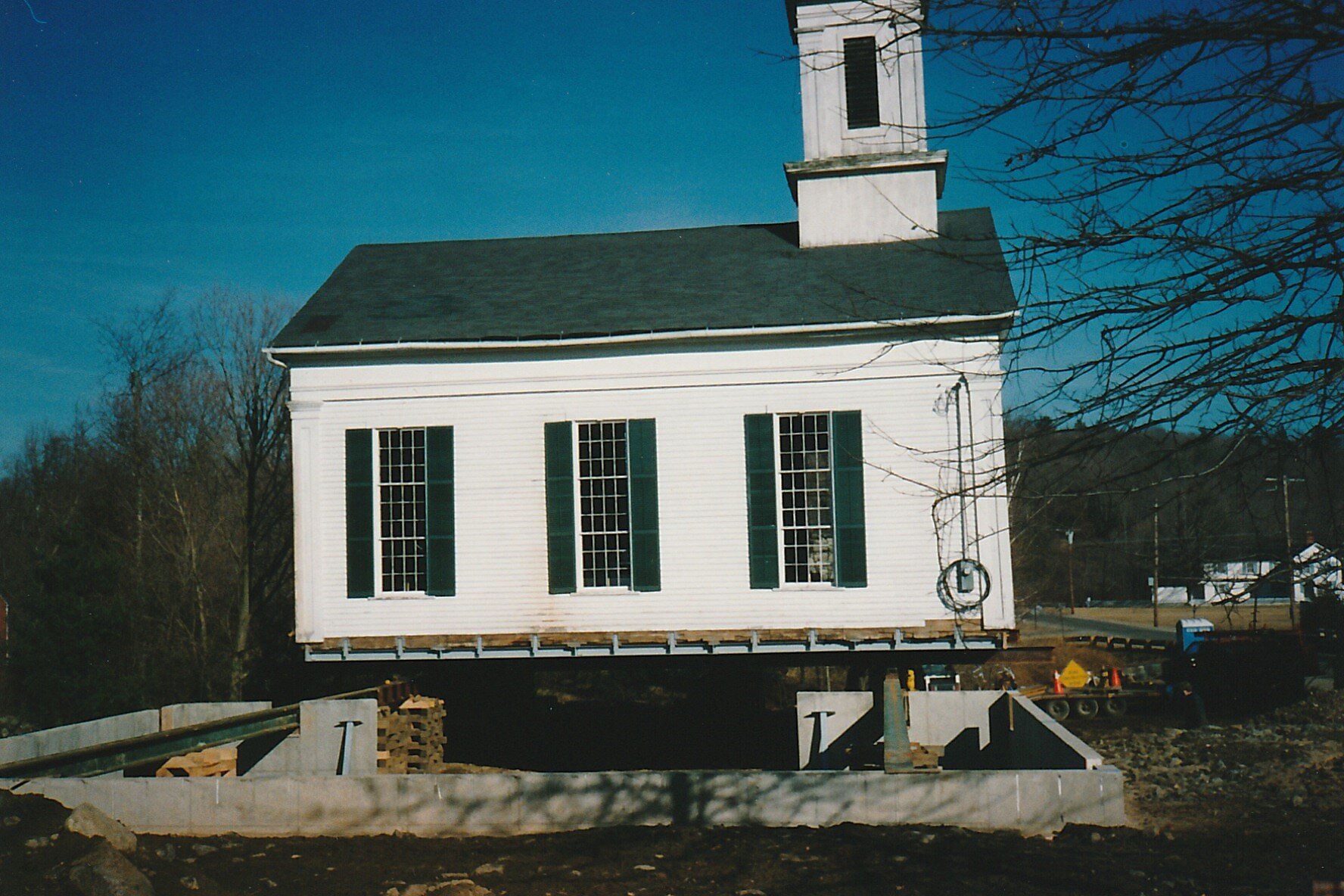History
Milton Congregational Church was built in 1791, and is the oldest church building in the town of Litchfield.
It was built on what is now the Milton Green by the Third Society of Litchfield. The members were allowed to pay for construction in cash, bar iron, oil, flax seed, and lumber. The Milton Ecclesiastical Society organized in 1795, inheriting the building from its predecessor. At that time, the building was painted yellow and the interior had no paint, plaster, or pews. Worshippers sat on planks raised from the floor by putting sticks into the ends. The building construction was not completed until 1841.
On August 19, 1798, the Society established the Milton Congregational Presbyterian Church with 24 members.
Many members of the community considered the yellow building to be an eye-sore to the Green, so Church members voted to move the building across the river to its present site on September 16, 1828, provided the move could be completed in six weeks. The land was given by Asa Morris.
The gallery was completed in 1835 and was used for a select school. It was partitioned off in 1904 and later housed the Milton Library. In 1970 it was renovated to provide rooms for Sunday School. Originally, the large front panels could be raised into a pocked above by utilizing stone counter-balances in the Loft.
In 1856, a new Communion service was given by Miss Lucretia Deming. It is still in use today. The Wilcox and White organ in the rear of the church was also purchased at that time, which remained in use until 1964 when it was replaced with an electric model.
Milton Congregational Church received aid from the State Missionary Society for over 103 years, until 1944 when it became self-sustaining. In 1948, the Church joined the United Church of Christ and is a member of the Litchfield South Association.
The Milton Green is still owned and maintained by the Church. It has remained unchanged since the early 1800’s. It has served as the home field for Milton baseball teams and as a play area for the Milton School. Currently it is used for recreation by members of the community and often rented in summer months to host wedding receptions.
Architectural History
Milton Congregational Church is post and beam construction, with six frames made up of 22’ 12x12 posts and 37’ 10x12 tie beams. The rafters are 22’ 8x8’s.
After the church was moved across the river from the Green in 1828, the Greek Revival features were added. These include temple framing, pilastered corners, and a pedimented façade.
The cupola was added in 1843.
In the mid-1800’s, a bell was installed in the cupola. Although it subsequently cracked, it is still located on the premises.
In 1947, the carriage shed (formerly located at the rear of the current parking lot) was removed.
Electricity was installed in 1954 and gas heating stoves were added in 1963. A lack of central heat meant that services could only be held from Palm Sunday through Christmas.
The current bell was installed in 1976, a gift from Mr. and Mrs. Donald Peck.
In 1996, the Church was moved off of its foundation and a new concrete foundation was poured. The members of the congregation and the Milton community raised $100,000 to complete the project. Much of the time and talent to complete the project was volunteered. A new basement also meant an upgrade in heating, so the Church could now be open year round.
In 2021, the church joined the 21st century by installing a well and septic system. Members now enjoy running water and indoor plumbing!
Leadership History
The first settled pastor was Rev. Benjamin Judd, who was called in 1802.
Rev. George J. Harrison served for 40 years, from 1854-1893.
Rev. Wesley E. Page was pastor in 1898, which the church celebrated its 100th anniversary.
Rev. Joseph D. Prigmore had a Boys Club in the gallery.
Pastor Miss Frances S. Walkley was at Milton from 1924-1938 and was very involved with the youth of the community.
Rev. Irving J. Enslin followed in 1938, and served for 23 years until 1962.
From 1962 - 1965 there were many student ministers.
In 1965, Rev. Thomas Campbell led MCC, followed by Dr. Thorpe Bauer, Dr. Harry L. Peatt, and Rev. George A. Smith.
In our more recent history, the Church has been served by Rev. Brad Harmon (1994 - 1997), Rev. Leslie Jacobs (1998-2000) and Rev. John Arens (2003-2006).
Rev. Peggy Allen led the Church from 2012-2021.



